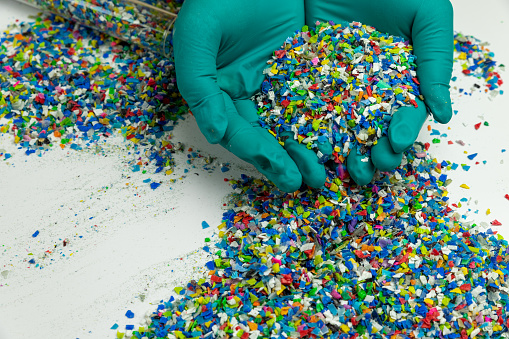Les plastiques dégradables et recyclés sont deux options potentielles pour résoudre le problème de la pollution blanche.
1. Biodegradable plastics for packaging and agricultural films
Biodegradable plastics are plastics whose properties can meet the performance requirements for use, remain unchanged during their shelf life, and degrade to environmentally friendly substances under natural environmental conditions after use. Degradable plastics have their advantages in terms of performance, practicality, degradability and safety.

In terms of performance,biodegradable plastics can meet or in some specific areas exceed the performance of conventional plastics;
In terms of practicality,degradable plastics have application properties and hygiene properties similar to those of similar conventional plastics;
in terms of degradability,degradable plastics can, after use, complete degradation relatively quickly in the natural environment (specific micro-organisms, temperature, humidity) and become fragments or non-toxic gases that can be easily used by the environment, reducing the impact on the environment;
In terms of safety, the substances produced or left over by the degradation process of degradable plastics are harmless to the environment and do not affect the survival of humans and other organisms.
The biggest obstacle to replacing traditional plastics at present, and the disadvantage of biodegradable plastics, is their high production cost compared to similar traditional or recycled plastics. Therefore, in applications such as packaging and agricultural films, which are short-lived, difficult to recycle and separate, have low performance requirements and require high levels of impurities, biodegradable plastics have more substitution advantages.
2. Recycled plastics are suitable for applications where hygiene requirements are not high

Recycled plastics are plastic raw materials that are re-processed through physical or chemical methods such as pretreatment, melt granulation and modification of waste plastics. The biggest advantage of recycled plastics is that they are cheaper than new and biodegradable plastics and can be processed to produce only one aspect of the plastic’s properties, depending on the performance required. In less frequent cycles, recycled plastics can maintain similar properties to conventional plastics, or can be blended with new material to maintain consistent properties.
However, after a number of cycles, the properties of recycled plastics deteriorate considerably or to the point of being unusable. In addition, recycled plastics are less likely to maintain good hygienic properties while remaining economical. For this reason, recycled plastics are suitable for applications where the number of cycles is low and the hygienic properties are not required.
The production process of recycled plastics
Waste plastics — sorting — crushing — washing — shaking dry — auxiliary material configuration (modification) — extrusion granulation — pelletizing packaging — final product
Changes in the properties of common plastics after recycling
| Types of plastic | Change in performance after one regeneration | Performance changes after multiple regeneration |
| PE | Yellowing of colour and reduced performance
|
Decreasing viscosity for HDPE and increasing viscosity for LDPE
|
| PP | Colour almost constant Melt index increased
|
Increased colour, still rising melt index, reduced fracture strength and tensile strength, etc.
|
| PS | Yellowing of colour and reduced performance
|
The degree of decline in each property is proportional to the number of regenerations
|
| PVC | More pronounced discolouration with a light brown tinge | Almost opaque brown colour with a tendency to decrease in specific viscosity
|
| ABS | More pronounced discolouration, but no significant change in properties when blended up to 20-30%.
|
Colour increases and all properties tend to decrease
|
| PA | Elongation decreases, elasticity tends to increase
|
Colour increases, elongation decreases further |
Note: Melt index, the fluidity of plastic materials during processing; specific viscosity, the static viscosity of a unit volume of liquid
3、White pollution mainly comes from the packaging field, biodegradable plastics have more room to play
Through comparison, biodegradable plastics have more alternative advantages in packaging, agricultural film and other applications where the use time is short and difficult to recycle and separate, because of their more stable performance and lower recycling costs; while recycled plastics have more advantages in household utensils, construction materials, electrical appliances and other applications where the use time is long and easy to sort and recycle because of their lower prices and production costs. White pollution mainly comes from the packaging sector, where biodegradable plastics have more room to play. With policy promotion and cost reduction, the future biodegradable plastics market has a bright future.
Comparison of biodegradable and recycled plastic properties
| Degradable plastic | Recycled plastics | |
| Degradable | Fully-degradable | Non-degradable |
| New product properties | Close to conventional plastics | — |
| Recycled product properties | Non-renewable | Good |
| Recycled situation | Can be buried directly | with wide variation in recycling economics |
| Environmental benefits | Completely degradable, eliminating white pollution and saving oil resources | Waste plastic recycling, reduce resource waste |
| Price | Higher | Lower |
| For disposable, hard-to-recycle areas | √ | × |
| Suitable for price-sensitive areas with low performance requirements | × | √ |
| Main application industry | Packaging, agricultural film, etc. | Household utensils, building materials, etc. |











